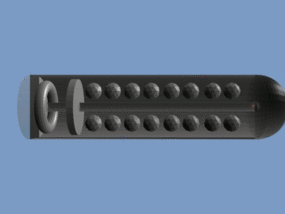Shrapnel facts for kids
Shrapnel refers to small, sharp pieces of material that are thrown outwards with great force when an explosive device goes off. Think of it like a powerful burst that sends bits of metal, concrete, or other broken objects flying in all directions. These pieces can be very dangerous because they move at high speeds, similar to how a bullet travels.
Contents
What is Shrapnel?
Shrapnel is not a specific type of material, but rather any broken pieces that come from an explosion. It can be parts of the bomb itself, or pieces of objects nearby that are shattered by the blast. For example, if a bomb explodes near a building, pieces of glass, wood, or metal from the building could become shrapnel.
How Does Shrapnel Work?
When an explosive goes off, it creates a sudden, powerful expansion of gas. This force pushes outwards very quickly. If the explosive is inside a container, like a metal casing, the force will break the container into many small, fast-moving pieces. These pieces are the shrapnel. Even if there's no container, the explosion can still break surrounding objects into dangerous fragments.
The Idea Behind Shrapnel
The idea of using fragments in explosions isn't new. In the past, people would sometimes put nails or other small, hard objects into bombs to make them more effective. This is because the flying pieces can cause more damage over a wider area than just the blast wave alone.
Shrapnel in History
The word "shrapnel" actually comes from a British artillery officer named Henry Shrapnel. In the early 1800s, he designed a special type of artillery shell. This shell was filled with many small metal balls and a bursting charge. When the shell exploded in the air, it would scatter these balls over a wide area, acting like a giant shotgun. This was a very effective weapon for its time.
Evolution of Shrapnel Shells
Over time, the design of these shells improved. Later, high-explosive shells became more common. These shells relied on the force of the explosion itself to break their casing into fragments. Today, the term "shrapnel" is used more broadly to describe any fragments created by an explosion, whether from a specially designed shell or just random debris.
Modern Uses and Dangers
While specific "shrapnel shells" are less common now, the principle of using fragments is still important in many explosive devices. For example, some grenades are designed with a casing that breaks into many small pieces upon detonation.
Safety Around Explosives
Because shrapnel can travel far and cause serious harm, it's very important to stay away from any unexploded objects or areas where explosions have occurred. Safety experts always advise people to keep a safe distance and report anything suspicious to adults or authorities.


